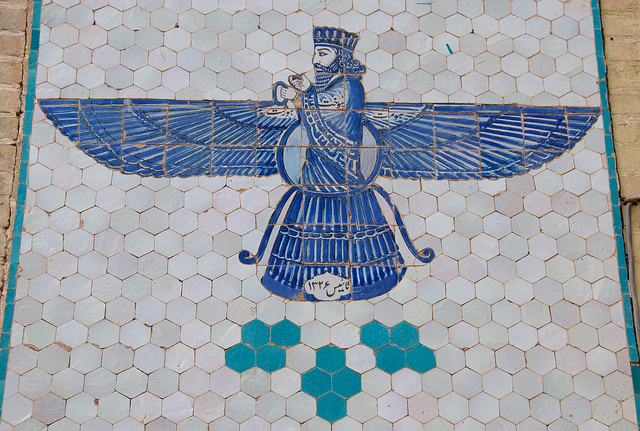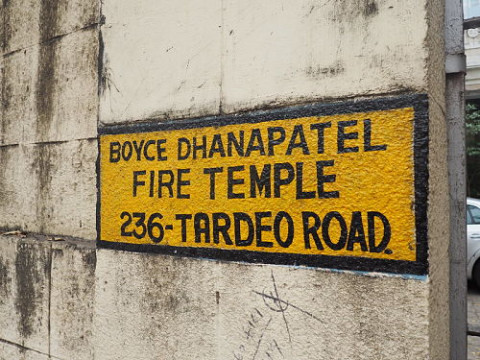A Brief Introduction to Zoroastrianism
Did you know that Zoroastrianism is one the oldest religions in the world?
If you're looking for more facts and a quick intro to the religion of Zoroaster, then you're in the right place!
We'll give you a great overview of the religion's origins, beliefs and other interesting facts.
Zoroastrianism sounds exotic and distant, yet it has had a huge influence over all of today's world religions including Judaism, Christianity and Islam.
Why? Because it is one of the first monotheist religions. It was founded by Zoroaster and it teaches belief in one God - Ahura Mazda.
There are very few Zoroastrians in the world today. A large part of their population is divided between Iran and India. The Zoroastrians living in India are called Parsis.
Let's learn more.
History & Origins of Zoroastrianism
It is uncertain when the religion was first founded but sources say that it could be dated as far back as 1200 BCE.
A priest named Zarathustra or Zoroaster, as the Greeks called him, founded the religion. He was born in Iran at a time when the Stone Age was gradually moving into the Bronze Age.
The Iranians, or Persians as they would have been then, believed in a polytheistic religion. Zoroaster convinced and converted them into monotheists.
Early Persians practiced many rituals, which necessitated sacrifices of animals and the use of the hallucinogenic plant, Haoma. Zoroaster condemned such practices and persuaded them to shift allegiance to the new faith that he propounded.
Zoroaster had a vision in which Ahura Mazda (God) taught him the new faith. Zoroaster struggled to get people to accept his religion but finally found acceptance in Bactria (northern part of Afghanistan). The king of the land was impressed by his teachings and soon made it into the state religion.

A depiction of Ahura Mazda executed in glazed tile in the town of Taft, Iran.
By A. Davey on Flickr (CC BY 2.0)
Cyrus The Great and Zoroastrianism
Little is know about the religion and its history till 549 BCE when the Persians led by Cyrus the Great of the Archaemenian family conquered Western Iran and founded the first Persian Empire.
The Archaemenians were a pious Zoroastrian family and they ruled their kingdom justly and efficiently. He tolerated all religions and allowed the exiled Jews to return to Jerusalem. Prompted by Cyrus’s goodwill and favour, the Jews incorporated and assimilated many Zoroastrians beliefs and practices.
Alexander the Great in 331 BCE overthrew the Archaemenied Empire. Under Alexander’s oppressive rule, many priests were murdered and sacred texts were burned. Fortunately, the Gathas, the core of the religion, said to have been written by Zoroaster himself, survived.
Alexander was followed by the reign of the Seleucids in 311 BCE who were followed by the Arcasids. The Arcasids were good and just rulers and Zoroastrianism was revived under their reign. But they were soon overthrown by the Sasanian, Ardashir. The Sasanians introduced several changes into the religion.
A central Zoroastrian Church was built which was solely under the control of the Sasanians. People were not allowed to worship images and fire temples were promoted. Also, religious tolerance was abandoned. Under the rule of the Church, Zoroastrianism became oppressive and highly ritualized.
Zoroastrianism continued suffering with the conquest of the Arabs. The Arabs burnt libraries and tried to eradicate this religion. Zoroastrians were subjected to greater taxes and were slowly forced to convert to Islam.
Eventually, Zoroastrianism became a minority religion in Iran. Several thousands of people fled to India and settled in various parts of the country. They formed their own community and called themselves Parsis (those from the land of Fars or Pars).
What are the Beliefs of Zoroastrianism?
Zoroastrianism believes in one god, Ahura Mazda, who is:
- Omniscient
- Omnipotent
- Omnipresent
- Impossible for a normal human being to conceive
- Unchanging
- The creator of everything
- And the source of all the goodness and happiness in the world.
This supreme God is worshipped and his prophet is Zoroaster.
Zoroaster is not worshipped but is followed as his directed path of truth and righteousness; asha will lead men and women to God.
Along with Ahura Mazda are his retinue of immortals; Amesha Spentas who are also his divine attributes.
By knowing them, man can know God. They are:
- Vohu Manah - Good mind and good purpose.
- Asha Vahishta - Truth and righteousness.
- Spenta Ameraiti - Holy devotion, serenity and loving kindness.
- Khashathra Vairya - Power and just rule.
- Hauravatat - Wholeness and health.
- Ameretat - Long life and immortality.
Combating the goodness is God’s adversary, Angra Mainyu who resides in hell.
This dualism is twofold – cosmic and moral. There is the cosmic dualism between god and the Angra Mainyu who is the destructive spirit that introduces the evils of death, sickness, etc into God’s pure and beautiful world. There is also a moral duality that points towards the inherent good and evil sides of a human being.

Chak Chak is a shrine near the city of Ardakan in Yazd province (Iran) and serves as a pilgrimage point for Zoroastrians.
Photo by reibai on Flickr (CC BY 2.0)
How do Zoroastrians Worship?
Zoroastrians are not fire worshippers as is generally believed although fire is an important symbol in their faith.
Fire or light represents the divine light of the Ahura Mazda. Therefore, when a Zoroastrian prays, he prays in the direction of fire or light. Zoroastrians also are not very ritualistic but are more concerned with ethics of ‘Good Words, Good Thoughts and Good Deeds’.
To represent these, a Zoroastrian will wear around him a cord, called a kusti that has been knotted thrice.
Zoroastrians also promote communal worship, which may be conducted during seasonal festivals or social functions such as marriage or navjote, the initiation ceremony of a young child into Zoroastrianism. It also does not promote temple worship and believers are allowed to pray at home.
Where do Zoroastrians Live Today?
There are ever dwindling numbers of Zoroastrians left in the world. They primarily reside in India and Iran.
There are only about 200,000 Zoroastrians left and their population continues to decline steadily.
It is often observed in the Zoroastrian community that they tend to marry late and often do not bear children. These are one of the main reasons why their population is decreasing. Furthermore, since Zoroastrianism does not accept children of mixed marriage and inter-religious marriages, they lose several new inclusions into their faith.
Zoroastrianism has flourished in the modern age. They were quick to accept the new changes. Parsis are the frontrunners of many fields in India. Some influential and notable Parsis are
- J.R.D Tata, a business tycoon and a remarkable philanthropist,
- Pherozshah Mehta and Dadabhai Naoroji, two very important early freedom fighters in India against the imperialist powers,
- the conductor of the Philharmonic Orchestra, Zubin Mehta,
- Freddie Mercury of the rock band ‘Queen’ and
- the popular and critically acclaimed writer, Rohinton Mistry.
Interesting facts about Zoroastianosm
- Zoroastrianism is supposed to have been a major influence on the religions of Christianity and Judaism who may have borrowed the ideas of heaven and hell from this religion.
- Zoroastrianism believes in the purity and goodness of all of God’s creations and thus they are very careful not to pollute and destroy river and trees. Thus, it is often called the first ecological religion ever.
You might also be interested in other world religions:
- A Brief Introduction to Islam
- A Brief Introduction to Hinduism
- A Brief Introduction to Christianity
- A Brief Introduction to Buddhism
- A Brief Introduction to Rastafarianism
- A Brief Introduction to Shinto
- A Brief Introduction to Bahai
Lead photo of road sign for Zoroastrian temple in India by Scott Edmunds on Flickr (CC BY 2.0)
Related Posts
By accepting you will be accessing a service provided by a third-party external to https://www.commisceo-global.com/

 +44 0330 027 0207 or +1 (818) 532-6908
+44 0330 027 0207 or +1 (818) 532-6908
